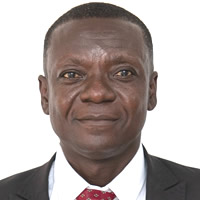

Mission Statement
In line with the vision, the Accra Metropolitan Assembly exists ‘to create an enabling environment for the sustainable improvement of quality of life of the people in the Metropolis through the provision of basic services in a coordinated system of decentralized administration and good governance’.
History Of Accra
Accra has been Ghana’s capital since 1877, and is today one of the most populated and fast growing Metropolis of Africa with a population of about 1,695,136 million people and an annual growth rate of 3.36%. The capital was transferred from Cape Coast 125 years ago.
Accra is derived from the Akan “nkran” meaning “an army of ants”. It is apparent that the name “nkran” or “nkranfo” is attributed to the thousands of anthills, which dotted the Accra plains.
Ghana’s first President, Dr. Kwame Nkrumah, declared Accra a city – the first city of Ghana, in 1961. Accra is not only the seat of Government but also the capital of the Greater Accra Region. Its outlets and inlets cover sea, air and land including rail and motorways.
Thus, links to the outside world and the other parts of the country were created. Accra is set to play a unique role. Accra opens like a huge page against the sky, showing its tropical and lush panoramic setting. There are about 44 foreign embassies in the city of Accra.
The growth and development of Accra could be attributed to the building of three European forts as trading posts. The first of these was Fort Crevecouer, built by the Dutch in 1650, which was later renamed Ussher Fort.
In 1661 the Danes built the second, Christianborg Castle at Osu, about three kilometres from the centre of Accra. Fort James built by the British followed this in 1673. For several years, the Christianborg Castle was the official residence of the Governors of the Gold Coast. After Independence, however, it was renovated in a manner befitting the seat of the Ghana Government, and renamed THE CASTLE.
It will be recalled that the ashes of the late George Padmore, a great Pan Africanist and freedom fighter were interred in the walls of this castle. Dr. W.E. Du Bois, father of Pan Africanism and before his death, Editor of the Encyclopaedia Africana was also buried within the precincts of the Castle. However his remains have been removed to the Du Bois Centre.
The other two forts in Accra were converted into prisons, the James Fort and the Ussher Fort Prisons. Another interesting feature of the former is that Dr. Kwame Nkrumah then leading the struggle for Independence from British colonialism was held in jail in the James Fort prison for nearly a year.
Some historians believe that the people of Lante Dsan-We were first to settle in Accra. Another school of thought has it that the first settlers of Accra were probably the Guans or the Obutus from Western Ghana.
However, it is traditionally believed that the ancestors of the present inhabitants of James Town (Ngleshie) were believed to have migrated from Nigeria, probably in the beginning of the 15th century. The Ga Mashie people – meaning indigenous Gas followed them.
These people first settled in Accra Central – James Town. They were later followed by other settlements at Nungua, La, Osu (Christianborg), Teshie and Tema. The settlements of Ewes in some parts of Ga Mashie and Osu is manifested by the similarity in customs or indigenous names, and especially the traditional Homowo feast which is also celebrated at Anehor in the Republic of Togo.
Date Created : 11/17/2017 6:29:32 AM













 facebook
facebook
 twitter
twitter
 Youtube
Youtube
 +233 593 831 280
+233 593 831 280 0800 430 430
0800 430 430 GPS: GE-231-4383
GPS: GE-231-4383 info@ghanadistricts.com
info@ghanadistricts.com Box GP1044, Accra, Ghana
Box GP1044, Accra, Ghana